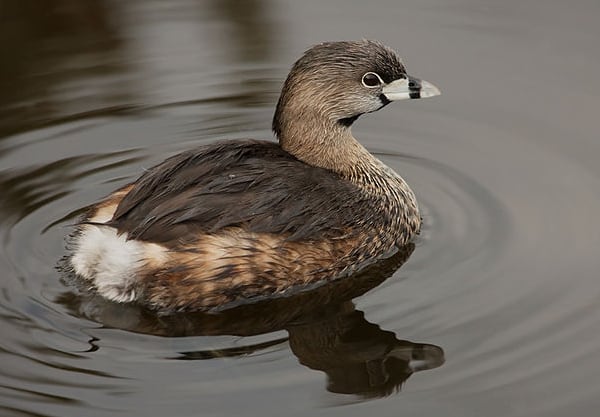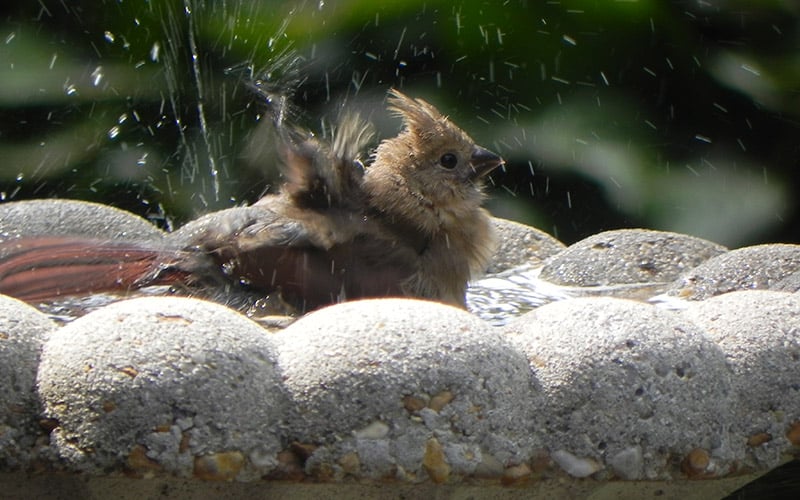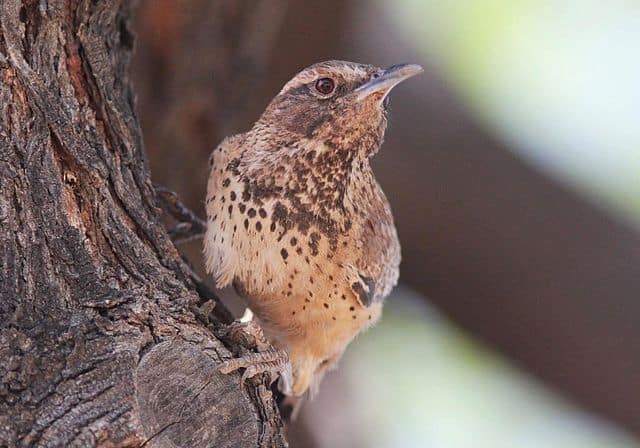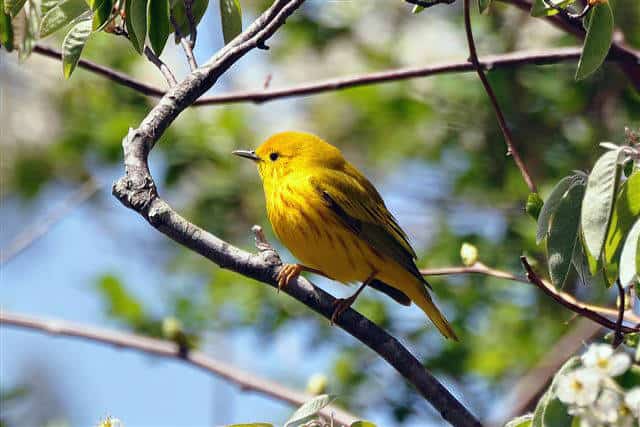Look For
Our most widespread and common small grebe, the pied-billed is usually seen alone (not in flocks) swimming on quiet waters where it dives and pursues small fish underwater, propelled by its feet. Tawny brown overall in all seasons, it gets its name from the black band around its pale bill, a field mark present only in summer.
This bird is smallish (13 inches in length) but has a big head, stocky neck, and a thick bill that differs from the more pointed bills of horned and eared grebes. During breeding season, the bill (which is pale in winter) becomes distinctively adorned with a thick, black band that wraps around an otherwise horn-colored bill.
Breeding pied-billed grebes also have black throats, but at other times their soft-brown necks and bodies contrast with whitish throats and puffy whitish undertails. Our other grebes have much sharper contrasting patterns on their heads and necks, and they are not as compact.
Listen For
For such a small bird, the pied-billed grebe has a big voice, giving a long, rapid-fire series of grunts, toots, and hoarse barks. They don’t often vocalize except during breeding season.
Find It
Pied-billed grebes nest in well-vegetated lakes, ponds, and pockets of marsh. You may find them in brackish water in winter, but they prefer freshwater habitats. The numbers of pied-billed grebes swell in the South during winter and migration, when many northern nesters abandon their frigid habitats for warmer, more productive wintering areas. Also, they are rarely spotted in flight!
Feeding Behavior
Pied-billed grebes are frequently seen diving for food or diving to evade predators or observers. Their wide-lobed feet push them beneath the water’s surface in search of small fish, amphibians, and a wide variety of aquatic invertebrates, including crayfish and insects. They also eat some plant matter.
Nesting Behavior
Mates call to each other as part of their courtship. Together, they build a nest that is basically a mound of matted vegetation. This mound is fastened to nearby plants and may float or rise from the shallows. The female lays four to six eggs, with the pair sharing the three-week incubation period. Both parents feed the young, which can fly by two months of age.
Wow!
To escape danger, the pied-billed will submerge and swim a long distance underwater. It may then raise only its head above the water, watching quietly for the danger to pass.




